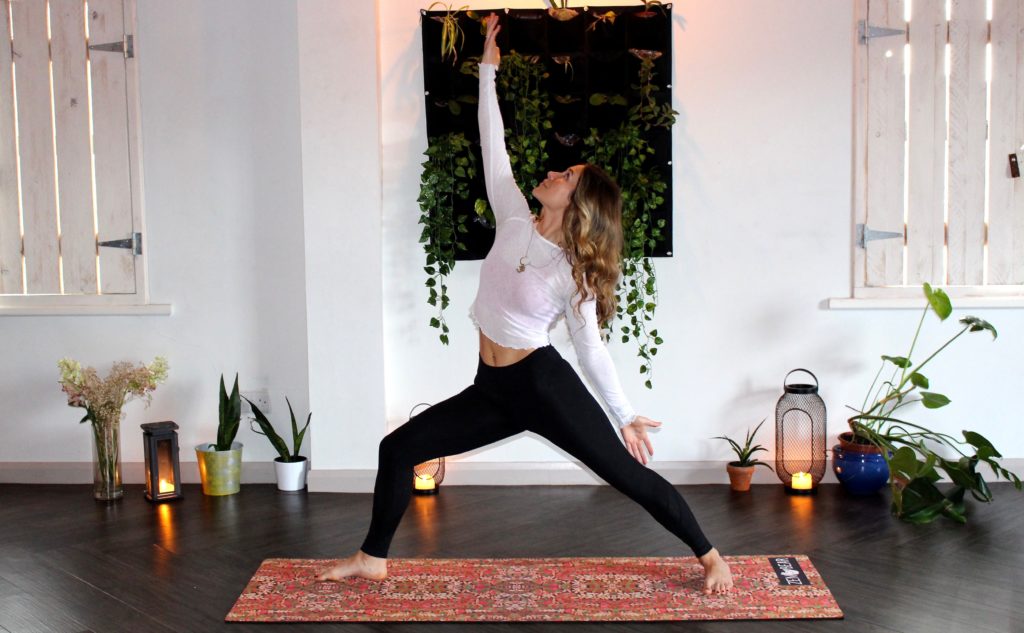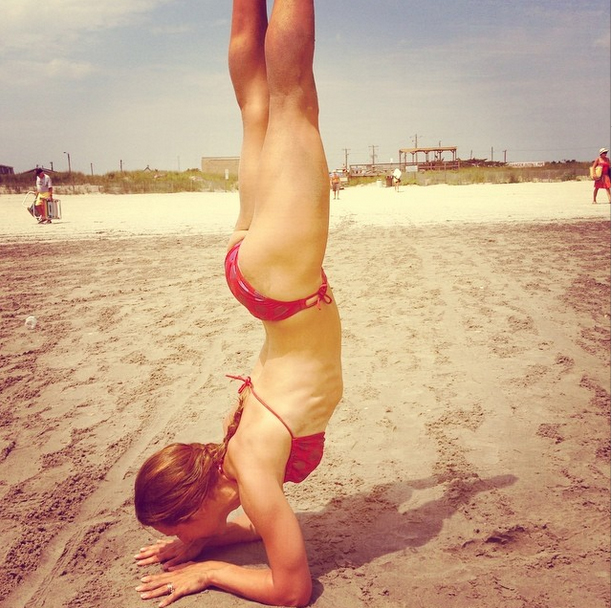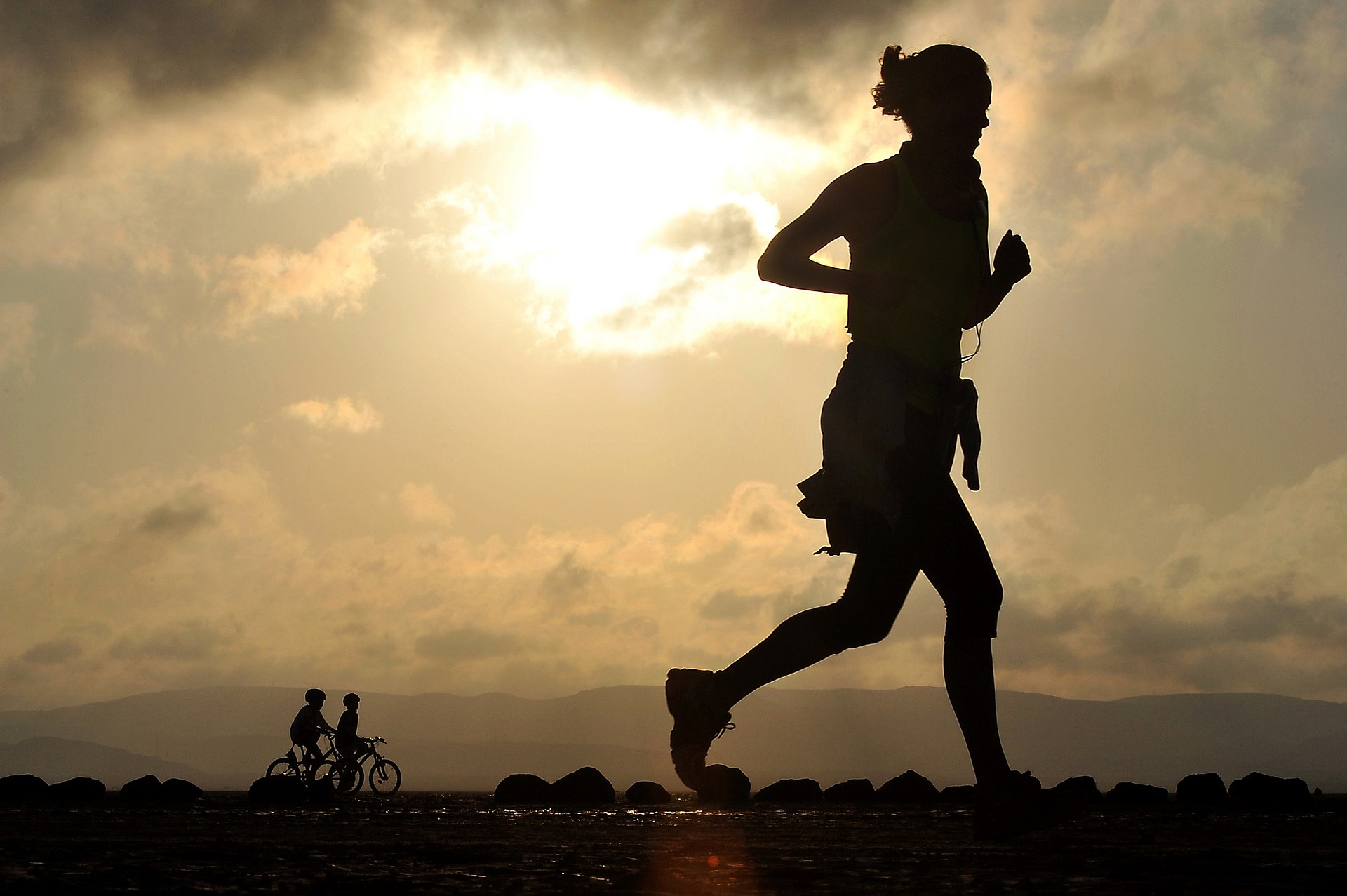For years I didn’t dare to call myself a “true yogi.” I am not bendy, yet I teach yoga. I used to feel like a complete sham, being a yoga teacher and not able to express full version of many of the postures.
Not to mention, I occasionally drank alcohol and used make-up daily, cared too much about my yoga outfit and the color of my mat, and participated in so many other things that this modern society offers to us that just doesn’t feel “yogic” enough.
I was so worried someone who is more bendy or more yogic than I am will find out about this and question my right to even teach yoga. But teaching yoga is not about how flexible you are or how fancy your yoga outfit is, or who has the most bohemian-looking shawl tossed over their shoulders during meditation.
Over time and with a lot of work, I turned these worries into strength. I showed up on my mat almost daily, I practiced mindfulness and kindness, studied and spent the time to become a yoga teacher. I got to improve my understanding of anatomy, my communication skills with students, and my explanations of postures. I had to let go of a tremendous amount of ego watching my students advance and surpass me in their physical abilities. Rather than envying them, I was filled with gratitude. It’s a truly humbling experience to watch your students surpass you.
Okay, maybe my inflexibility is not all that bad now. I can touch my toes or the ground during forward bends, my shoulders are pretty flexible, and I don’t have a whole lot of range of motion problems like I used to when I started doing yoga (I couldn’t even sit on my heels in child’s pose). But as far as yogic standards go, I’m not all that bendy. I’m nowhere near achieving Hanumanasana and even after years of practice, I still can’t get into full Lotus, although my ankles no longer hurt when I can manage Half Lotus.
But whenever my stiff body does manage a touch of improvement in flexibility, it becomes a great victory. As a yoga teacher I do not have the luxury of hiding my inflexibility in the back of the studio. They are out there on full display. Since I fully understand flexibility difficulties, I don’t expect miracles from my students. I am able to offer them tried and true modifications, and I can describe exactly where they might be feeling tightness. I can also show them how to feel a sense of accomplishment and success in their practice despite their weaknesses, as I learned early on that while my flexibility is sub par, I can make up for it with my strength, balance, and coordination.
Years ago, while teaching gomukasana (cow face yoga pose), I was demonstrating how to position the legs when suddenly my knees landed on top of each other for the first time. I almost stopped to shout out in joy but it would have been inappropriate and ridiculous in a room full of bendy students who find it the most natural thing ever to be so flexible.
But there’s something more to this: This small victory made me feel like I could accomplish anything! The intense sensation of joy and triumph in that moment gave me so much empowerment. Once I was able to let go of the goal-oriented nature of my practice and the negativity I had let myself experience for being inflexible, my personal asana practice flourished.
Today my yoga practice is about joy. It is about love. It is so much less about the asana practice. When I step on my mat, I close my eyes and I move my soul with breath and posture. I let my heart pour out on the mat.
I have become so much more compassionate and forgiving of myself on the mat that it has permeated other areas of my life too—less judgment, more being okay with others as they are. By allowing expression and removing rigidity from my personal yoga practice, my body has opened up as well.
Being inflexible has done wonders for my ego, which has a tendency of raging out of control from time to time. Every time I feel a hint of embarrassment because my students are bendier than I am, I take the opportunity to remember that yoga is not a competition, and that I can honor the progress of my own practice, even if that progress doesn’t extend much further than beyond my own toes.
For anyone who is not a flexible yoga teacher or student, here are 3 tips that worked wonders for me on my mat.
Start using props
We often go for things before we are ready. While I fully support this mentality off the mat, jumping into a pose before you are ready is not the way to go. I have definitely been guilty of this in the past but I won’t be anymore. Now I would rather use blocks and yoga strap to protect myself at all costs rather than pretend my body is somewhere it is definitely not just to get injured.
Engage your muscles
Asana (yoga postures/poses) means nothing if your muscles are not engaged. Always start your practice by planting the four corners of your feet on the mat, ground yourself and flex your toes and lift the kneecaps, turn the inner thighs towards each other.
Engage the core, straighten the spine and release the shoulders. Everything should be stacked, then you’re free to move. When you’re working on folds or seated stretches, always make sure the feet are engaged in order for the stretch to be effective. Bend your knees if needed. Here the previously mentioned props come really handy. When it comes to asanas, always prioritize integrity over depth. It is better to bend your knees during down dog to ensure your spine is straight rather than compromise your alignment just so your heel touches the ground.
Don’t expect the same result every day
Yoga activates muscles over and over through dynamic practice. But not two days are different. Some days I sit more, other days I walk a lot or do hard work in the garden, some days I rest more other days less. What does this mean for me? Someday I will be able to touch the floor in forward bend, other days I only reach my toes. To be honest, when performing my very first forward bend of the day I can’t even straighten my legs and I’m happy to grab my shins. But it comes easier with the next and the next.
Get more like this—Sign up for our daily inspirational newsletter for exclusive content!
__
Photo: Zen Bear Yoga via Unsplash





